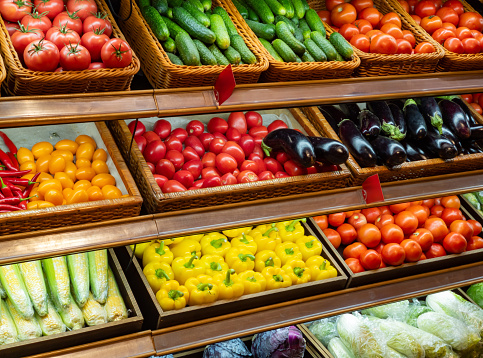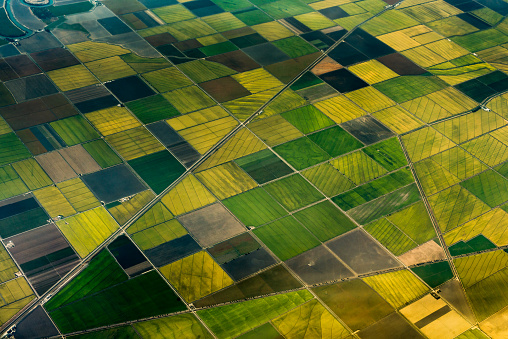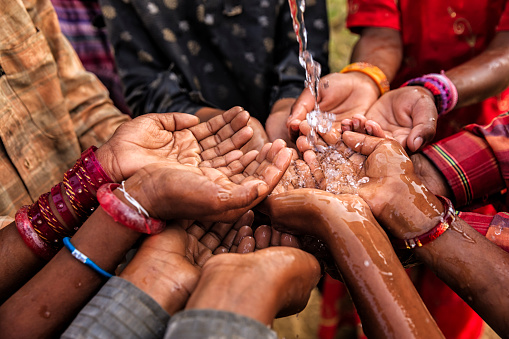FOR MORE THAN 80 YEARS, gross domestic product (GDP) has served as a global benchmark for measuring economic success. While GDP is useful for tracking output and productivity, it is increasingly evident that it does not capture the complete picture of national well-being.
GDP’S Limitations
GDP’s strength lies in its ability to measure economic output objectively. Tracking the value of goods and services produced reflects factors that affect people’s lives, like employment and investment. However, GDP’s singular focus on transactions overlooks crucial factors like income distribution, environmental degradation, and unpaid work. A high GDP may mask extreme income inequality or environmental harm, factors which deeply affect well-being.
In Africa, where many economies rely heavily on the informal sector and natural resources, GDP’s limitations are pronounced. Consider the importance of informal trade to the livelihoods of millions of Africans. Take Kibera on the edge of Nairobi, for example – much of the informal economy that exists there goes unrecorded. Consider small-scale farmers or villages where subsistence farming, bartering and inherent community support contribute to a sense of
self-sufficiency and well-being that GDP doesn’t capture. Or communities in the Niger Delta or the Democratic Republic of Congo, where extraction of resources contributes to the GDP, but also leads to environmental pollution and minimal access to the wealth being generated.
GDP treats financial speculation as equally productive as sustainable agricultural activities, ignoring the social value (or lack thereof) of different types of economic activity and insufficiently capturing the value of others, such as technology. Countless online services, such as Google and Wikipedia, are used daily by millions of Africans for learning, connection and opportunity – all without an obvious price tag. For many, these platforms open doors to new skills, business ideas and global knowledge, yet GDP doesn’t adequately account for this kind of value.
Our continent’s unique opportunities and challenges call for a measure of prosperity that goes beyond output. Several such measures exist, and Harvard University’s Social Progress Index (SPI) is one of the most comprehensive.

Getting a true measure of prosperity in Africa will require flexible models that integrate GDP with indicators reflecting social and environmental wellbeing.
Social Progress Index (SPI)
Social progress is defined as a society’s capacity to meet its citizens’ basic human needs, establish the building blocks that allow individuals and communities to enhance and sustain their quality of life, and create conditions that would allow everyone to reach their full potential.
The SPI excludes economic indicators entirely and assesses 12 well-being components across three key dimensions: basic human needs, foundations of well-being, and opportunity, which includes access to advanced education.
Designed to complement GDP, or address its shortcomings, it homes in on a further 54 factors, such as personal safety, inclusivity and access to shelter. The index has been creating a broader picture of 170 countries’ overall progress since 2011 and 2023 was the first year that it found a global social progress recession.
Mauritius, South Africa and Tunisia – the top-ranking countries in Africa – were among those in which social performance had declined, whereas three of the lowest-ranking countries – Burundi, Eritrea and Niger – had improved.
As a continent where inequality and limited access to essential services remain significant challenges, the SPI’s metrics can provide a clearer understanding of the most-needed interventions. For example, unlike GDP, it captures the struggles of communities without access to clean water or healthcare. It also reflects the opportunities created by local initiatives to improve education and governance. The ability to highlight such nuances makes the SPI a valuable tool.
However, it is not a standalone solution and works best in tandem with economic measures like GDP to create a balanced understanding of progress





1
The Human Development Index (HDI) combines indicators of life expectancy, education and per capita income to assess development. It offers a balanced view and is particularly relevant for countries striving towards basic human welfare.
2
The Multidimensional Poverty Index (MPI) goes further by capturing poverty through shortcomings in health, education and living standards, providing a fuller picture of poverty.
3
The Genuine Progress Indicator (GPI) factors in social and environmental costs, making it particularly relevant when the sustainable use of natural resources is paramount.
4
A particularly flexible framework, the OECD Better Life Index, prioritises well-being dimensions like community and environmental quality, which are in line with African priorities.
4
MORE TOOLS
Doughnut economics
Developed by economist Kate Raworth, doughnut economics views prosperity as a balance between social needs and ecological boundaries. The model is visualised as a doughnut with three concentric rings: the outer ring sets ecological limits, the inner ring establishes social thresholds, and the middle represents the “safe and just space for humanity”. Raworth argues that unchecked economic growth risks exceeding the Earth’s capacity, making a sustainability focus an imperative.
Her model is compelling for its simplicity and clarity, framing growth within environmental constraints. It has succeeded at city level in places like Amsterdam, where authorities use the model to plan sustainable urban development. Applying it in African contexts could help urban centres like Cape Town or Lagos manage rapid growth while protecting natural resources. However, the doughnut model is not an empirical metric but a framework, so adopting it in Africa would require developing specific measures and data for social and environmental thresholds. Where economic development and basic needs are still a priority, doughnut economics offers a valuable but challenging path forward, demanding policies that balance growth with sustainability.
A well-being economy
Lorenzo Fioramonti’s well-being economics rethinks traditional economic models by prioritising health, environmental sustainability and social equity over maximising profit. Unlike GDP, which rewards all forms of production equally, well-being economics focuses on incentivising activities that genuinely contribute to social and ecological well-being.
Fioramonti proposes internalising externalities – the indirect costs or benefits of an economic activity experienced by someone other than the consumer or producer – into product prices, ensuring that the social and environmental costs of production are accounted for. In this case, corporations would bear the cost of pollution or resource depletion, reflecting the true impact of their operations.
Well-being economics is compatible with Africa’s need to move away from extractive, resource-driven business models. However, it requires robust policy frameworks to incentivise businesses to prioritise long-term well-being over short-term profit. For our continent, where regulatory oversight varies widely, achieving this level of corporate accountability may be challenging. Still, adopting elements of the model could enhance sustainable development, especially in sectors like agriculture, energy and manufacturing, where both social impact and environmental protection are critical.
MEASURING WHAT MATTERS
Africa’s unique challenges and opportunities, as well as the priorities of individual countries and regions, make a multidimensional approach essential. With a young population, high levels of inequality, and a wealth of natural resources, the continent has much to gain from sustainable, inclusive growth. However, GDP alone does not capture its potential or vulnerabilities, particularly in extractive industries and environmental pressures.
Ultimately, getting an accurate measure of prosperity in Africa will require flexible models that integrate GDP with indicators reflecting social and environmental well-being. This will not only enable policymakers to make better informed decisions, but also ensure that economic growth translates into meaningful, tangible improvements in people’s lives.



In the 80 years since GDP was adopted as a measure of an economy, it has become clear that we need to look beyond national income to determine a nation’s welfare.

rethinking
how we gauge
prosperity
read time: 5 min





